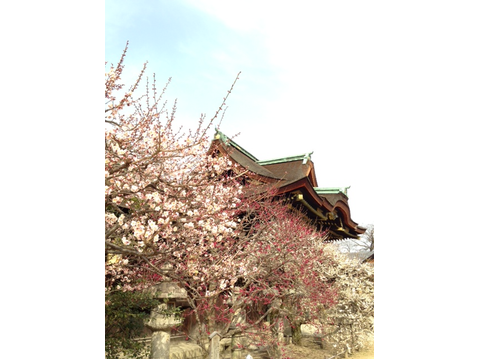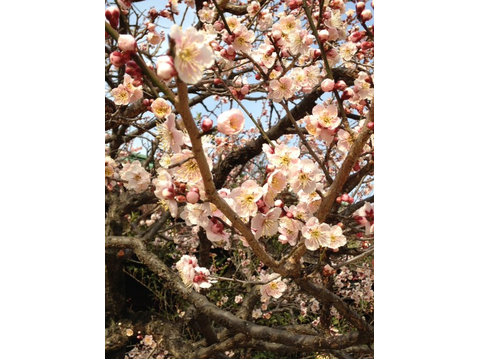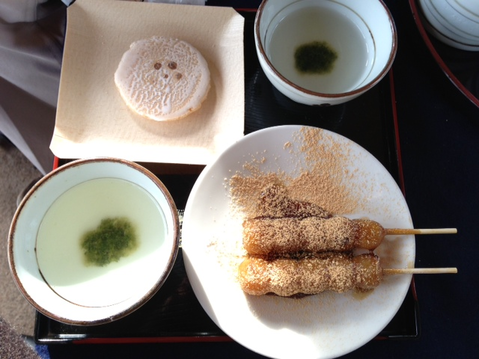The plum trees are blossoming.
Mar 19, 2013 (Tue.)
Spring has come to the Kansai Region, a season that, concerning Japan, is usually connected with the myriad cherry blossoms of late March and early April. Little attention is paid to the equally, astonishingly beautiful blossoms of the plum trees. The plum trees are an ancient symbol of spring in Japan and most of eastern Asia. Traditionally as well as contemporarily the plum blossoms are linked with the New Year’s celebrations, stemming from the fact that New Year’s used to be celebrated around February in Japan, as it is still done, for instance, in China. In the cold of February, the blooming buds of the plum trees are truly a message from Nature that spring, longer days and warmer weather is approaching.
This year, having been particularly cold, the plum blossoms are later than usual, and so they are in fact in their prime at this very moment. You may already have noticed trees abundant with pure white, faint pink, bright red or even yellow blossoms, hither and thither.
A spot particularly famous for its plum blossoms is the Shinto shrine called Kitano Tenmangu in Kyoto. It can be reached in less than an hour from Kansai Gaidai by taking the Keihan Line to Demachiyanagi Terminal, and from there taking bus no. 203. Kitano Tenmangu is dedicated to the deified Sugawara Michizane, a court noble of the Heian period. Sugawara Michizane (also known as Tenjin-san, which is what Kyoto locals call the shrine) was renowned for his skills with the writing brush, and he was therefore deified as the God of Studies. For this reason, students flock to the shrine in this season, to pray for passing the entry exam of their university of choice, among other study-related wishes.
You will be greeted by quite a sight, as you enter through the main gate, as blossoms in all imaginable hues of pink and red gently sways in the breeze of the East Wind. For a small fee, you can also enter the orchard of the shrine, where you will be served plum tea and sweet rice crackers, while enjoying the view of the shrine’s famed plum blossoms along with their sweet, distinct fragrance.
With the temperature still undecidedly going up and down, why not take the opportunity to herald the arrival of spring, while enjoying the sight, fragrance and even the taste of blossoming plum trees. Bring your friends or go alone, and perhaps you will find that the blooming plum is not just a symbol of spring, but one of the continuance of life, like the ancient, anonymous poet may have intended with the statement that,
“One plum blossom makes the whole world fragrant.”
Mikkel Kofod Norgard,
Student Assistant, Center of International Education
Home Institution: University of Aarhus



